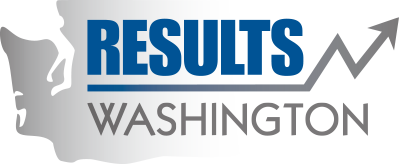Archived: Rate of Opioid overdose deaths
Additional data available on the Washington Tracking Network.
Washington State, like many other states, is currently experiencing an opioid abuse and overdose crisis involving prescription opioids and heroin. Approximately 700 individuals die each year from opioid overdose. From 2004 to 2014, the largest increase in heroin overdose deaths occurred among younger people ages 15 to 34 years. According to a recent statewide survey of syringe exchange clients, 57% of those who inject heroin said they were “hooked on” prescription opiates before they began using heroin.
State government agencies, local health departments, professional groups and community organizations across Washington State have been actively building networks and capacity to reduce deaths from opioids. The Department of Health’s Unintentional Poisoning Workgroup collaborated to develop a statewide working plan for opioid response.
The Interagency Working Plan is a key directive under Governor Inslee’s Executive Order 16-09, “Addressing the Opioid Use Public Health Crisis”. The order was signed in October of 2016 and directs state agencies to work with local public health, Tribal governments, and other partners to implement the plan.
The following legislation was passed this year to assist in addressing the epidemic. HB 1427 will assist with opioid treatment, expansion of the prescription monitoring program, and create new rules for prescribing opioids. SB 5514 will improve the department’s ability to monitor the epidemic by collecting data from emergency departments.
HB 1427: http://app.leg.wa.gov/billsummary?BillNumber=1427&Year=2017
SB 5514: http://app.leg.wa.gov/billsummary?BillNumber=5514&Year=2017
The WA State Interagency Opioid Working Plan outlines the goals, strategies and actions that are being implemented by a number of stakeholders across diverse professional disciplines and communities. This working plan outlines current efforts and proposed actions to respond to this epidemic. It will be updated regularly as this work moves forward.
GOAL 1: PREVENTION WORKGROUP
- Strategy 1: Promote use of best practices among health care providers for prescribing opioids for acute and chronic pain
- Strategy 2: Raise awareness and knowledge of the possible adverse effects of opioid use, including overdose, among opioid users
- Strategy 3: Prevent opioid misuse in communities, particularly among youth
- Strategy 4: Promote safe home storage and appropriate disposal of prescription pain medication to prevent misuse
- Strategy 5: Decrease the supply of illegal opioids
GOAL 2: TREATMENT WORKGROUP
- Strategy 1: Build capacity of health care providers to recognize signs of possible opioid misuse, effectively screen for opioid use disorder, and link patients to appropriate treatment resources
- Strategy 2: Expand access to and utilization of opioid use disorder medications in communities
- Strategy 3: Expand access to and utilization of opioid use disorder medications in the criminal justice system
- Strategy 4: Increase capacity of syringe exchange programs (SEP) to effectively provide overdose prevention and engage clients in support services, including housing
- Strategy 5: Identify and treat opioid abuse during pregnancy to reduce withdrawal symptoms in newborns
GOAL 3: NALOXONE WORKGROUP
- Strategy 1: Educate individuals who use heroin and/or prescription opioids, and those who may witness an overdose, on how to recognize and appropriately respond to an overdose
- Strategy 2: Make system-level improvements to increase availability and use of naloxone
GOAL 4: DATA WORKGROUP
- Strategy 1: Improve PMP functionality to document and summarize patient and prescriber patterns to inform clinical decision makin
- Strategy2: Utilize the PMP for public health surveillance and evaluation
- Strategy 3: Continue and enhance efforts to monitor opioid use and opioid-related morbidity and mortality
- Strategy 4: Monitor progress towards goals and strategies and evaluate the effectiveness of our interventions
This state-wide epidemic requires a coordinated effort from public and private organizations and the public. We encourage all Washingtonians to become familiar with the following information that can help you understand the epidemic and how you can assist:
Learn about opioid overdose and how to reverse overdoes at www.stopoverdose.org
Learn how to safely dispose of unused medications to ensure others don’t misuse them at www.takebackyourmeds.org
Understand the importance of taking your medications as directed at http://www.doh.wa.gov/YouandYourFamily/PoisoningandDrugOverdose/TakeAsDirected
Review important prevention information for parents and families at http://starttalkingnow.org/parents/find-resources/prescription-drugs
Become familiar with what opioid treatment programs are available in your community at https://www.dshs.wa.gov/bha/division-behavioral-health-and-recovery/opioid-treatment-programs
